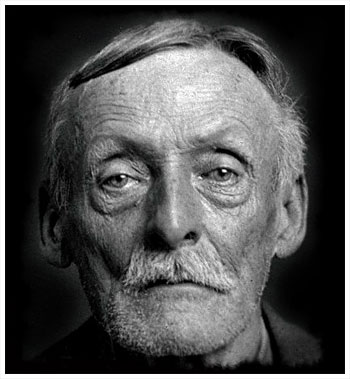The Mind of a Serial Killer
BIOLOGICAL INFLUENCES
If serial killers were all born with an obvious physical biological characteristic, like a large 666 on their forehead, we would have noticed the trend by now. Unfortunately, biological factors are not that easy to recognize when determining who will become a serial killer and who won't. However, we can look at the psychological trend of antisocial personality disorder and try to find the biological aspects of this disease, since the disease is apparent in all serial killers. Many parents of children later diagnosed with antisocial personality disorder noticed the traits of the disease very early in the child's life. This suggests that there are biological factors present for the disease.
Genetics
A study released by the Journal of Abnormal Psychology (2008) found that antisocial personality disorder becomes stable in mid to late adolescent years. Stable means that the disease does not vary in severity, but remains consistent into adulthood. Specifically, there was a direct genetic link (vs. environmental) with impulsiveness and unemotional response. (Blair and others, 2006)
Neurological Factors
Research involving those with brain damage and MRI studies on the brains of people with antisocial personality disorder found interesting connections. Early brain damage to the prefrontal cortex (part of the frontal lobe) resulted in children who didn't learn normal social and moral behavior. They grew into adults with no feelings of guilt, remorse, or empathy. Individuals with antisocial personality disorder are reported as having 11% fewer brain cells in the prefrontal cortex area. The cortex is divided into four lobes, each with different functions.
- Frontal Lobe: personality, emotions, planning, behavior in social situations, making decisions
- Parietal Lobe: perception and sensory experiences
- Temporal Lobe: hearing and speaking
EXAMPLES OF SERIAL KILLERS AND BIOLOGICAL INFLUENCE
 Wuornos's father committed suicide. The family has no other known history of mental illness.
Wuornos's father committed suicide. The family has no other known history of mental illness.
 Wuornos's father committed suicide. The family has no other known history of mental illness.
Wuornos's father committed suicide. The family has no other known history of mental illness.
 Albert Fish had a family history of several mental illnesses. His brother lived at a state mental hospital, his sister was said to have a "mental affliction", his mother had frequent hallucinations, an uncle suffered religious mania, and another brother died of hydrocephaly.
Albert Fish had a family history of several mental illnesses. His brother lived at a state mental hospital, his sister was said to have a "mental affliction", his mother had frequent hallucinations, an uncle suffered religious mania, and another brother died of hydrocephaly.
 Other than being polydactyl, there is no mention of any other biological problem with Lecter or his family.
Other than being polydactyl, there is no mention of any other biological problem with Lecter or his family.
 At age eleven, Gacy was hit on the forehead with a swing, resulting in head trauma and a blood clot in his brain. The blood clot was unnoticed until it caused him blackouts at age sixteen. After Gacy's execution, Dr. Helen Morrison, in an attempt to isolate common personality traits of violent sociopaths, his brain was removed and studied; no abnormalities were found.
At age eleven, Gacy was hit on the forehead with a swing, resulting in head trauma and a blood clot in his brain. The blood clot was unnoticed until it caused him blackouts at age sixteen. After Gacy's execution, Dr. Helen Morrison, in an attempt to isolate common personality traits of violent sociopaths, his brain was removed and studied; no abnormalities were found.
 A dresser fell on Ramirez at age two, and he received thirty stitches and a contusion on his head. He was diagnosed at age six with temporal lobe epilepsy, suffering from grand mal seizures. After witnessing the murder of his cousin Mike's wife, Ramirez began smoking cannabis and sniffing glue at age thirteen. Ramirez's drug use continued and worsened throughout his life, and he became addicted to cocaine. He ate only junk food and had poor hygiene, causing his teeth to rot.
A dresser fell on Ramirez at age two, and he received thirty stitches and a contusion on his head. He was diagnosed at age six with temporal lobe epilepsy, suffering from grand mal seizures. After witnessing the murder of his cousin Mike's wife, Ramirez began smoking cannabis and sniffing glue at age thirteen. Ramirez's drug use continued and worsened throughout his life, and he became addicted to cocaine. He ate only junk food and had poor hygiene, causing his teeth to rot.
 There are no known biological influences involving Cho's reason for committing the Virgina Tech Massacre other than his psychological problems.
There are no known biological influences involving Cho's reason for committing the Virgina Tech Massacre other than his psychological problems.
Dr. Eric Hickey, a professor at California State University and the Director of the Center for Forensic Studies at Alliant International University. Dr. Hickey has considerable field experience working with the criminally insane, psychopaths, sex offenders and other criminals. Assembling the most extensive database on demography of serial murder, Hickey found these statistics (Hickey, 2010):
- 88% are male
- 85% are Caucasian
- 28.5 is the average age for first murder
- 62% target exclusively strangers
- 22% kill at least one stranger
- >71% operate in a specific area/location, instead of traveling an amount of distance for a crime